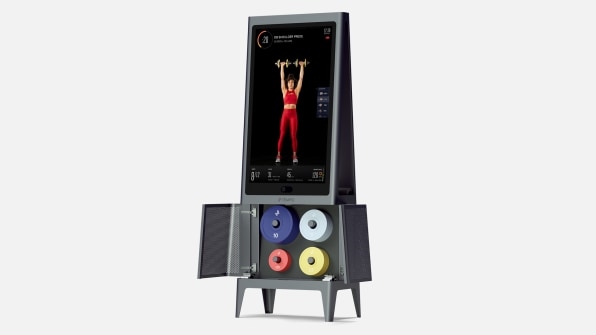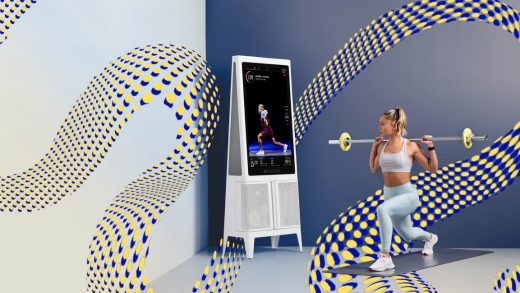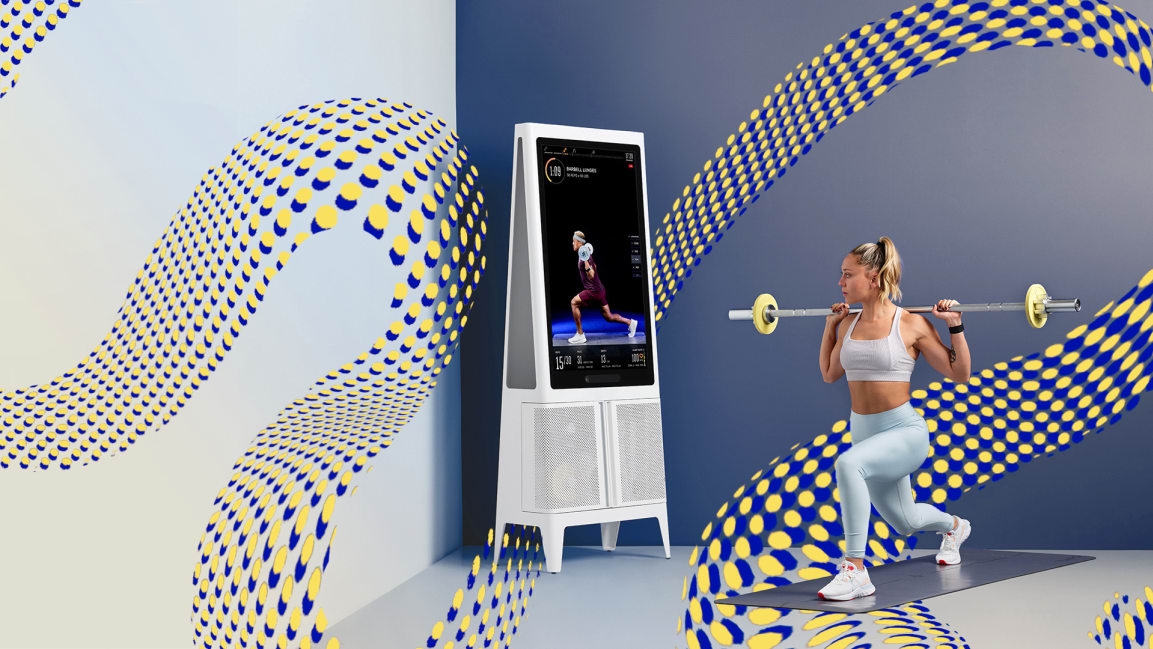This AI-powered home gym is like having a personal trainer in your living room
While Peloton and Mirror are designed for people who love spinning or studio classes, no similar system existed for those of us who prefer the kind of weight training and HIIT workouts you might get at OrangeTheory or Barry’s Bootcamp. Enter the new kid on the block: Tempo, a new machine that uses artificial intelligence and machine learning to bring this kind of workout into your home. And this week, the company received $60 million in Series B funding led by General Catalyst and Norwest Ventures to fuel its growth, bringing its total funding to $77.5 million.
The $1995 machine itself is a screen that’s embedded in a sleek armoire that also neatly houses a mat, weights that range from 7.5 to 100 pounds, a foam roller, and everything else you might need for a full-body workout. You can attend one of seven live classes a day, where your name will appear on the screen along with everyone else working out, allowing you to connect and compete with others the way you would at the gym. Coaches can see your name on the screen and may cheer you on for beating your last rep count (thanks to the 3D sensors that track your motion) or for rising to the top of the pack. Alternatively, you can simply log into one of the hundreds of prerecorded classes that range in length from 15 minutes to an hour. All the while, Tempo’s sensors are counting your reps, recommending weights, and scanning your movements to tell you when your form is off, the way a coach or personal trainer might. And a heart rate monitor that comes with the machine allows you to track your heart rate and calculate how many calories you’ve burned.

[Photo: courtesy Tempo]
Moawia Eldeeb, cofounder and CEO, has been working on this technology for five years, since he graduated from Columbia University’s engineering school. In order to be able to give the user feedback about their form, he says the company had to capture over a million workouts in 3D. The team also invested heavily in the design of the device, which is aesthetically pleasing (in a Google Home-like way) and compact, allowing it to fit nicely into the decor of the user’s home.
I’ve tested Tempo for a week. In many ways, I’m exactly the kind of user the company had in mind when developing it. I’m an OrangeTheory addict who attended classes several times a week before the pandemic hit. But my gym closed in March and I’ve been struggling to figure out how to get the same workout at home. As a result, my energy levels have tanked, I’ve lost all muscle definition, and my weight has been slowly climbing. When I took my first Tempo class, I felt a wave of relief, because the workout felt so familiar. It felt good to sweat, feel soreness from countless squats, and even hear that I needed to correct my posture.
Though I previously never would have considered a device such as this, given its high price point, it’s unclear when I’m going to feel comfortable going back to the studio, even though gyms are now technically open in my state. But now that I am saving more than $100 a month on gym fees, I have more disposable income to spend on a home-gym system such as Tempo. And while I miss interacting with coaches and members in person, there are definite benefits to having a device like this in your home. I used to have to book classes in advance and drive 10 minutes away to attend them. Over the past week, I’ve been able to sneak classes in whenever my schedule allows, from when I first wake up to my lunch break.
For Eldeeb, one of the most important aspects of fitness is the way it connects you with other people, so he’s focused on translating the social aspect of workouts digitally. He was born in Egypt but came to the United States when he was nine because his brother had a health condition that required care. His family struggled to make ends meet, and when a fire broke out in their New York apartment, they ended up in a homeless shelter. On a whim, he visited a nearby YMCA, where he found a supportive community that helped him apply for a scholarship to a private high school, which paved the way for him to attend Columbia University. To pay for school, he worked as a personal trainer. “My whole life has been shaped by training,” he says. “Both the way trainers have helped me, and through my own work as a personal trainer.”

With this machine, Eldeeb wants to bring the benefits of a personal trainer to a wider audience. And while he began building the technology long before the pandemic, the current situation has made Tempo’s value proposition more relevant than ever. As our social distancing measures stretch out over months—and perhaps even years—consumers are increasingly looking for alternatives to their gym and are willing to invest in machines that will effectively replicate those workouts at home. Tempo says that sales are up 500% since February and the company is on track to generate $100 million in revenue by the end of 2020.
I’ve been using Tempo every day for a week now, and it’s not an exaggeration to say it’s transformed my life in quarantine. I’ve been starting the day with an intense, sweaty workout, sometimes with my four-year-old daughter cheering me on in the corner. After months of feeling sluggish and sedentary, I’m full of energy.
(34)



